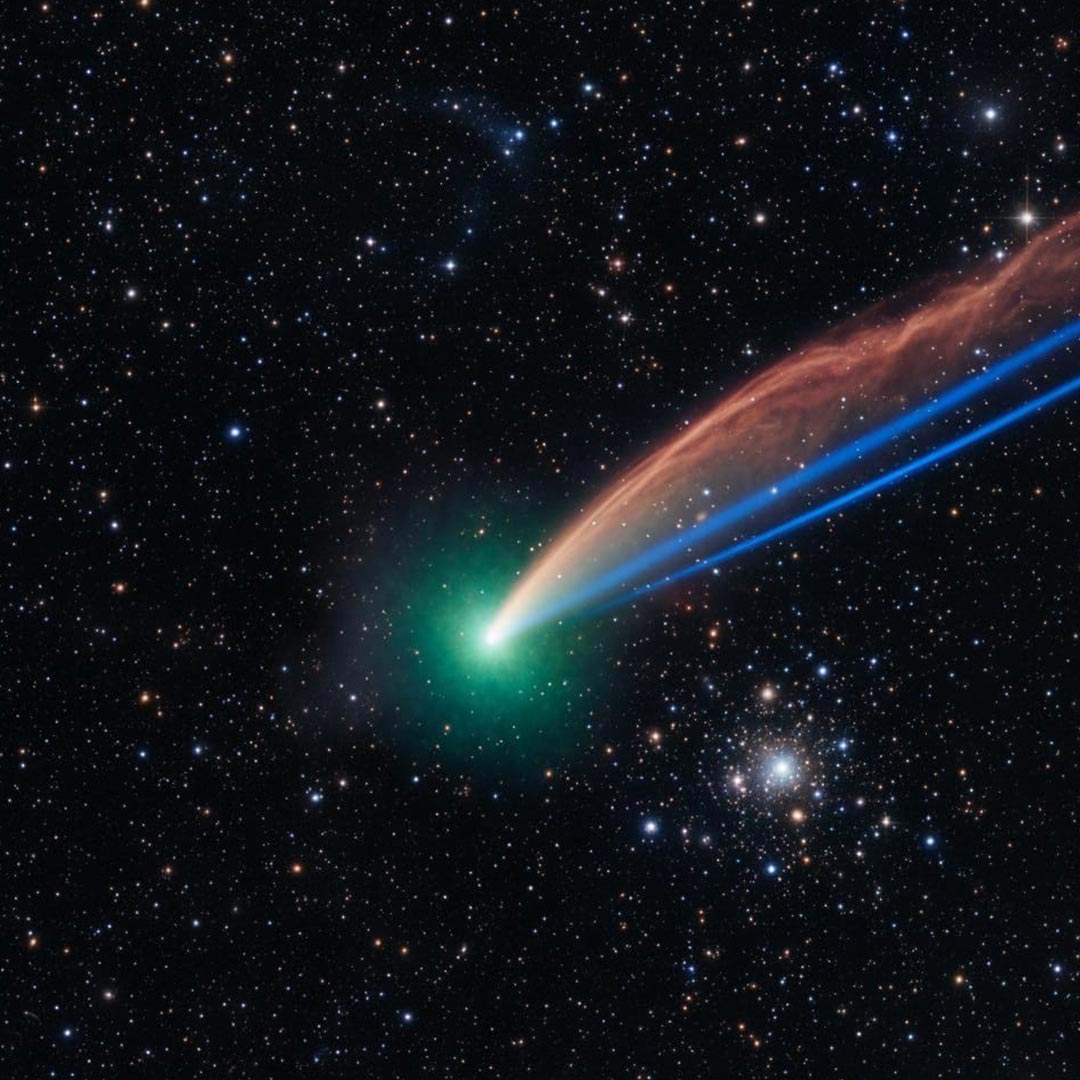
Comet C/2025 A6 (Lemmon): A stellar visitor in October
In the vastness of the universe, occasionally an unexpected visitor emerges and captures everyone’s attention: a comet. This October 2025, the sky presents us with Comet C/2025 A6 (Lemmon), a traveler from the outer reaches of the solar system that promises to be one of the most fascinating astronomical events of the year.
Discovered in early 2025, this comet not only defied initial brightness predictions but could also be visible to the naked eye under dark skies.
A Surprising Discovery
Imagine a faint, blurry dot in the sky, initially mistaken for a nondescript asteroid. Thus began the story of Comet Lemmon.
On January 3, 2025, the Mount Lemmon Survey telescope in Arizona, USA, captured images of an object with an apparent magnitude of just 21.5, so faint that it was 600,000 times fainter than the brightest star in the night sky, 4.5 astronomical units (AU) from the Sun.
Named after the observatory that discovered it, C/2025 A6 (Lemmon) revealed its true identity soon after: it displayed cometary activity with a faint gaseous coma and a budding tail.
Its origin is as fascinating as its appearance. This is a long-period comet, with an orbit of approximately 1,350 years, originating from the enigmatic Oort Cloud: a spherical envelope of ice and dust that surrounds our solar system like a distant shield.

Autor: Chuck Ayoub
From Darkness to Spectacular
Initially, astronomers estimated that Lemmon would reach a maximum magnitude of 10, too faint to be seen without instruments. But, as is often the case with these unpredictable travelers, reality exceeded expectations.
The most recent observations indicate that it will reach magnitudes between 3.5 and 4.4, bright enough to be seen with the naked eye in dark skies. A true cosmic twist.
Key Dates and Observation Times
Here’s a guide to help you not miss the best of the spectacle:
Highlights
July 2 – Solar conjunction (invisible from Earth).
October 10 – Visible in the constellation Ursa Major, at magnitude ~5.9 and with an ion tail of up to 3°.
October 16 – It will pass within 1° of Cor Caroli, in Canes Venatici.
October 21 – Closest approach to Earth: 0.60 AU (90 million km). Coincides with dark skies due to the New Moon.
November 2 – Crosses the celestial equator, making it visible also from the Southern Hemisphere.
November 8 – Perihelion (closest approach to the Sun, 0.53 AU). Maximum brightness expected.
How to See Comet Lemmon?
You don’t need a telescope to observe it, but following these steps will help you enjoy it to the fullest:
When to Look for It
Until mid-October: best in the morning sky (4–5 a.m.).
After October 15: visible after sunset (7–8 p.m.).
Best Nights: October 20–23, moonless and during the peak of the Orionid meteor shower.
Where to Look
Look for dark skies, away from light pollution.
From high latitudes in the Northern Hemisphere, the comet is already circumpolar (visible all night).
Use apps like Stellarium to locate it.
What to Use
With the naked eye: If it reaches magnitude 4 or higher, you’ll see it as a diffuse star with a small tail.
7×50 or 10×50 binoculars: These reveal details of the coma and its tail.
A Green Comet and Other Cosmic Companions
Comet Lemmon’s greenish glow is due to the presence of gases like carbon dioxide in its coma.
Furthermore, it doesn’t travel alone. It shares the celestial stage with other comets visible this month, such as C/2025 R2 (SWAN) and C/2025 K1 (ATLAS), making October a “green” month for comet hunters.
A Message from the Origins of the Solar System
Beyond its ephemeral beauty, Comet Lemmon is a time capsule. These icy travelers are primitive remnants from the formation of the solar system, so if you’ve ever wanted to see a comet without a telescope, this is your chance.
Observing Comet Lemmon and its greenish glow, we realize that we are part of an immense universe, where even something fleeting can surprise us.

 Español
Español
